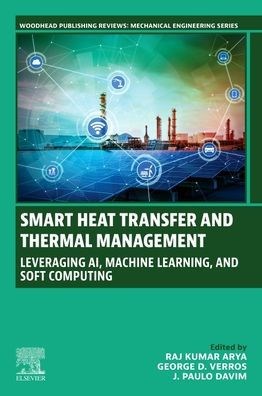Smart Heat Transfer and Thermal Management: Leveraging AI, Machine Learning, and Soft Computing
Smart Heat Transfer and Thermal Management: Leveraging AI, Machine Learning, and Soft Computing revolutionizes heat transfer engineering by integrating artificial intelligence (AI), machine learning (ML), and soft computing. This groundbreaking book delves into state-of-the-art research and practical applications, providing a holistic approach to optimize thermal management. By deepening the understanding of heat transfer principles while explaining AI, ML, and soft computing methodologies, it offers innovative solutions for heat transfer challenges across various industries. The synergy between these disciplines results in enhanced predictive modeling, system optimization, and thermal control for improved energy efficiency and cost-effectiveness.
Soft computing techniques, including fuzzy logic and neural networks, expand traditional heat transfer methods, allowing for adaptive and intelligent thermal systems. Through case studies, simulations, and real-world examples, the book demonstrates how AI and ML-driven algorithms can lead to sustainable and eco-friendly thermal management solutions, making it a valuable resource for engineers, researchers, and students alike.
1147168660
Soft computing techniques, including fuzzy logic and neural networks, expand traditional heat transfer methods, allowing for adaptive and intelligent thermal systems. Through case studies, simulations, and real-world examples, the book demonstrates how AI and ML-driven algorithms can lead to sustainable and eco-friendly thermal management solutions, making it a valuable resource for engineers, researchers, and students alike.
Smart Heat Transfer and Thermal Management: Leveraging AI, Machine Learning, and Soft Computing
Smart Heat Transfer and Thermal Management: Leveraging AI, Machine Learning, and Soft Computing revolutionizes heat transfer engineering by integrating artificial intelligence (AI), machine learning (ML), and soft computing. This groundbreaking book delves into state-of-the-art research and practical applications, providing a holistic approach to optimize thermal management. By deepening the understanding of heat transfer principles while explaining AI, ML, and soft computing methodologies, it offers innovative solutions for heat transfer challenges across various industries. The synergy between these disciplines results in enhanced predictive modeling, system optimization, and thermal control for improved energy efficiency and cost-effectiveness.
Soft computing techniques, including fuzzy logic and neural networks, expand traditional heat transfer methods, allowing for adaptive and intelligent thermal systems. Through case studies, simulations, and real-world examples, the book demonstrates how AI and ML-driven algorithms can lead to sustainable and eco-friendly thermal management solutions, making it a valuable resource for engineers, researchers, and students alike.
Soft computing techniques, including fuzzy logic and neural networks, expand traditional heat transfer methods, allowing for adaptive and intelligent thermal systems. Through case studies, simulations, and real-world examples, the book demonstrates how AI and ML-driven algorithms can lead to sustainable and eco-friendly thermal management solutions, making it a valuable resource for engineers, researchers, and students alike.
257.99
Pre Order
5
1

Smart Heat Transfer and Thermal Management: Leveraging AI, Machine Learning, and Soft Computing
750
Smart Heat Transfer and Thermal Management: Leveraging AI, Machine Learning, and Soft Computing
750Paperback
$257.99
257.99
Pre Order

Product Details
| ISBN-13: | 9780443338816 |
|---|---|
| Publisher: | Elsevier Science |
| Publication date: | 11/01/2025 |
| Series: | Woodhead Publishing Reviews: Mechanical Engineering Series |
| Pages: | 750 |
| Product dimensions: | 6.00(w) x 9.00(h) x 0.00(d) |
About the Author
What People are Saying About This
From the B&N Reads Blog
